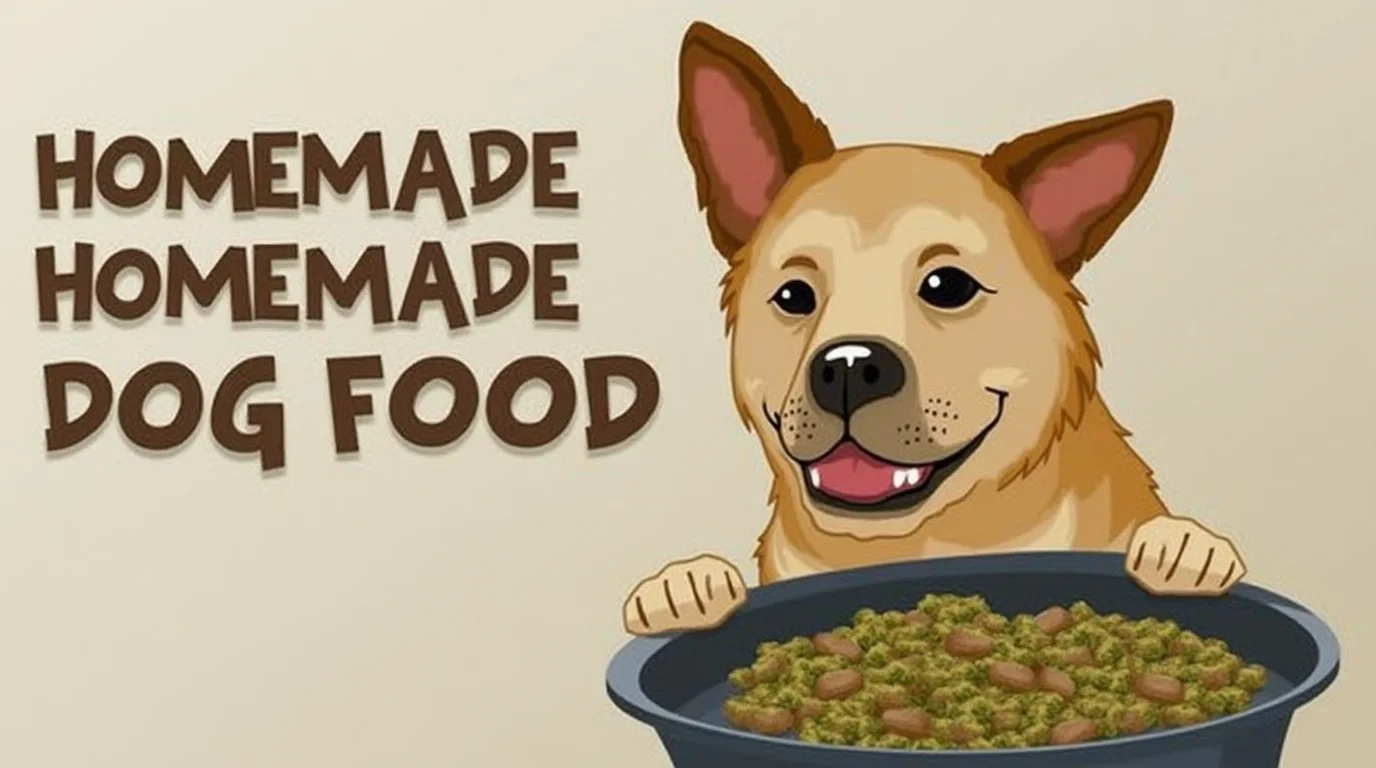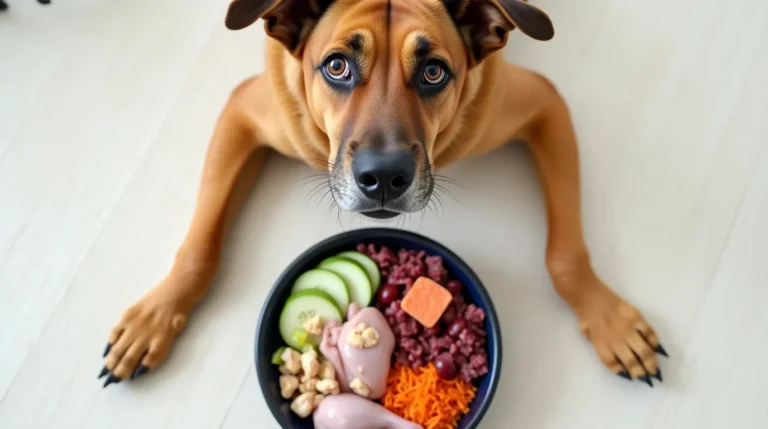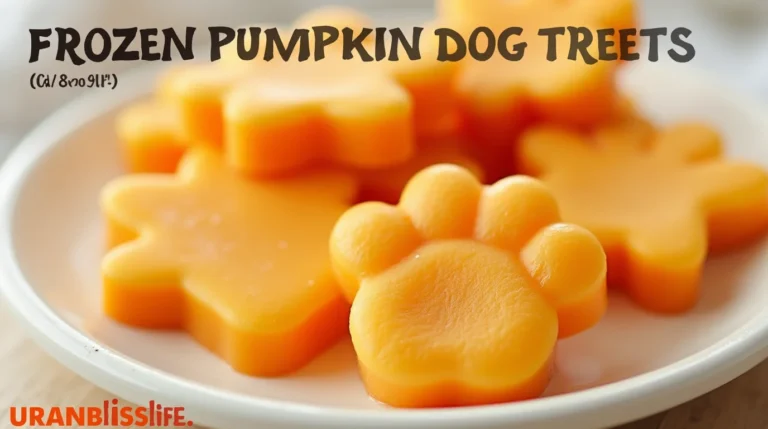Table of Contents
Feeding your dog homemade meals can provide them with fresh, healthy, and balanced nutrition tailored to their specific needs. Whether you’re looking to address allergies, support weight management, or just offer your furry friend wholesome, real food, crafting homemade dog food recipes is a fantastic solution.
In this guide, you’ll find simple, nutritious recipes and tips to ensure your pup gets all the nutrients they need.
Why Choose Homemade Dog Food?
Preparing your dog’s food at home has several benefits:
- Customizable Nutrition
Tailor meals to suit your dog’s breed, age, size, and health conditions. - No Fillers or Additives
Avoid unhealthy preservatives, artificial flavors, or low-quality fillers found in some commercial dog foods. - Fresh Ingredients
Homemade meals ensure your dog eats fresh, whole, and nutrient-dense ingredients. - Food Sensitivity Management
Easily eliminate allergens or irritants from their diet.
Key Ingredients for Balanced Dog Food
When crafting dog food recipes, it’s essential to include a balance of protein, carbohydrates, fats, and vitamins:
Proteins
- Chicken
- Beef
- Turkey
- Lamb
- Eggs
- Fish (salmon, whitefish)
Carbohydrates
- Brown rice
- White rice (easier to digest)
- Sweet potatoes
- Oats
- Quinoa
Vegetables
- Carrots
- Green beans
- Peas
- Spinach
- Zucchini
- Pumpkin (unsweetened, canned, or fresh)
Fruits (Optional)
- Blueberries
- Apples (seedless)
- Pears
Healthy Fats
- Fish oil
- Coconut oil
- Olive oil
Homemade Dog Food Recipes
1. Chicken and Rice Delight
A simple and gentle meal, perfect for dogs with sensitive stomachs.
Ingredients:
- 1 cup of cooked, shredded chicken
- ½ cup of cooked white rice
- ¼ cup of steamed carrots (diced)
- 1 teaspoon of fish oil
Instructions:
- Boil the chicken until fully cooked, then shred it into small pieces.
- Cook white rice and steam the carrots until tender.
- Combine all ingredients in a bowl and mix well. Serve warm or store in the fridge for up to three days.
2. Beef and Sweet Potato Bowl
A hearty, protein-packed meal with essential nutrients.
Ingredients:
- 1 pound of ground beef (lean)
- 1 cup of mashed sweet potatoes
- ½ cup of steamed green beans
- 1 tablespoon of olive oil
Instructions:
- Cook the ground beef in a skillet, ensuring it is fully browned. Drain excess fat.
- Boil or bake sweet potatoes, then mash them.
- Steam the green beans and chop them into bite-sized pieces.
- Combine all ingredients in a bowl and mix thoroughly.
3. Turkey and Spinach Medley
This low-fat recipe is perfect for dogs needing a leaner diet.
Ingredients:
- 1 pound of ground turkey
- 1 cup of cooked quinoa
- ½ cup of steamed spinach (chopped)
- 1 teaspoon of coconut oil
Instructions:
- Cook the turkey in a pan until browned.
- Prepare quinoa according to package instructions.
- Steam spinach until wilted, then chop finely.
- Mix all ingredients together, adding coconut oil for flavor and nutrients.
4. Fish and Pumpkin Feast
A great option for dogs with allergies or skin issues.
Ingredients:
- 1 cup of cooked salmon (bones removed)
- ½ cup of cooked brown rice
- ¼ cup of pureed pumpkin
- 1 teaspoon of fish oil
Instructions:
- Bake or grill salmon until fully cooked.
- Cook brown rice until tender.
- Mix the salmon, rice, and pumpkin in a bowl, adding fish oil for an omega-3 boost.
5. Lamb and Oatmeal Stew
Perfect for dogs that enjoy variety in their meals.
Ingredients:
- 1 pound of ground lamb
- 1 cup of cooked oatmeal (unsweetened)
- ½ cup of chopped zucchini (steamed)
- 1 tablespoon of olive oil
Instructions:
- Cook the lamb thoroughly in a skillet.
- Prepare oatmeal according to instructions.
- Steam zucchini until soft, then chop into small pieces.
- Combine all ingredients, mixing well before serving.
Tips for Preparing Homemade Dog Food
- Transition Gradually
Slowly introduce homemade food into your dog’s diet over 7–10 days to prevent digestive upset. - Portion Control
Adjust portion sizes based on your dog’s weight, activity level, and age. Consult your vet for recommendations. - Avoid Harmful Foods
Steer clear of onions, garlic, chocolate, grapes, raisins, and high-fat or spicy ingredients. - Storage
Store homemade dog food in airtight containers in the refrigerator for up to three days or freeze for longer storage. - Consult Your Vet
Work with your veterinarian to ensure homemade recipes meet your dog’s nutritional requirements.
FAQs About Homemade Dog Food
1. Can I feed homemade dog food daily?
Yes, but ensure the meals are balanced and meet your dog’s nutritional needs. Consulting with a vet or pet nutritionist is key.
2. Can I use raw meat in homemade dog food?
While some owners prefer raw diets, cooking meat eliminates harmful bacteria and makes food safer for your dog.
3. How do I know if my homemade food is nutritionally balanced?
A veterinarian or pet nutritionist can help you determine if your recipes meet all of your dog’s dietary needs.
4. Are supplements necessary for homemade dog food?
Sometimes. Adding calcium, vitamins, or omega-3 supplements may be needed to fill nutritional gaps.
5. Can I switch between different recipes?
Yes! Rotating recipes can provide variety and ensure a broader spectrum of nutrients.
6. How much homemade food should I feed my dog?
The amount depends on your dog’s size, activity level, and weight goals. Consult your vet for personalized guidelines.
Conclusion
Creating homemade dog food recipes allows you to provide your dog with fresh, healthy, and customized meals. By focusing on high-quality ingredients and balanced nutrition, you can ensure your furry friend thrives. Always work with your veterinarian to tailor recipes to your dog’s specific needs and enjoy the process of making meals that are both delicious and beneficial for their health.







